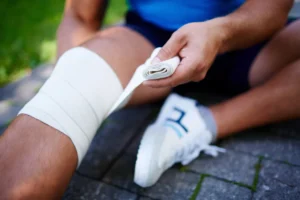Chiropractor or Massage for Lower Back Pain
Are you tired of living with constant lower back pain? Imagine a world where you can finally find relief and regain control of your life.
Whether you choose a chiropractor or massage therapist, both options offer effective solutions to alleviate your discomfort.
In this article, we will explore the benefits, risks, and techniques associated with each treatment.
By the end, you’ll have a better understanding of which approach is best suited for your unique needs.
Key Takeaways
- Chiropractic and massage therapy are both effective in relieving lower back pain.
- Chiropractic involves spinal manipulation to treat musculoskeletal conditions, while massage therapy focuses on manipulating soft tissues.
- Massage therapy increases blood flow, reduces inflammation, and releases natural pain-relieving chemicals in the body.
- Personal factors such as pain tolerance, treatment goals, and physical condition should be considered when choosing between chiropractic and massage therapy for lower back pain.
Benefits of Chiropractic Care for Lower Back Pain
You will experience significant relief from your lower back pain through chiropractic care. Chiropractors are trained professionals who use their hands for spinal manipulation to treat various musculoskeletal conditions, including lower back pain. Sports chiropractors are skilled professional with the musculoskeletal system, and utilize many techniques to improve lower back pain. These techniques are dry needling, functional rehab, graston, and cupping, along with other specialized treatments. These treatments can improve mobility, dysfunction, pain, and stiffness, but can help get to the root cause of the issue in lower back pain.
Effectiveness of Massage Therapy for Lower Back Pain
Massage therapy is a highly effective treatment option for relieving lower back pain. It involves the manipulation of soft tissues, such as muscles and tendons, to alleviate tension and promote relaxation.
The hands-on approach of massage therapy helps to increase blood flow, reduce inflammation, and release endorphins, which are natural pain-relieving chemicals in the body.
Regular massage sessions can not only provide immediate relief but also contribute to long-term management of lower back pain.
Potential Risks and Side Effects of Chiropractic Treatment
Experiencing dizziness or headaches, as well as feeling soreness or discomfort in the treated area, are potential risks and side effects of chiropractic treatment. These side effects are usually temporary and subside within a few days.
Soreness is the most common side-effect. However, this side-effect usually only lasts a few hours or at most a day or two.
Different Techniques Used in Massage Therapy for Lower Back Pain
When considering massage therapy for pain in the low back, it’s important to be aware of the different techniques that can be used to alleviate discomfort and promote healing.
Some commonly used techniques include:
- Swedish massage, which uses long, flowing strokes and kneading to relax muscles.
- Deep tissue massage, which targets deeper layers of muscle and connective tissue to relieve chronic pain.
- Trigger point therapy, which focuses on specific points of tension to release muscle knots and improve range of motion.
Personal Factors to Consider When Choosing Between Chiropractic Care and Massage Therapy
You should consider your specific needs and preferences, as well as your overall health and medical history, when deciding between chiropractic care and massage therapy for lower back pain. Here are three important personal factors to consider:
- Pain tolerance: If you have a low pain tolerance, massage therapy may be a more suitable option as it typically involves gentle manipulation and relaxation techniques.
- Treatment goals: Determine whether you’re seeking immediate pain relief or long-term management. Chiropractic care focuses on mobilizing the spine and correcting the root cause, while massage therapy aims to reduce muscle tension and promote relaxation.
- Physical condition: Consider your current physical condition and any underlying health conditions. Chiropractic adjustments may not be recommended for certain conditions, such as osteoporosis or spinal cord injury, while massage therapy can be adapted to accommodate various health concerns.
Conclusion
In the battle against lower back pain, chiropractic care and massage therapy stand as powerful allies. Like skilled warriors, they each bring their own unique techniques to the fight, providing relief and healing.
But remember, dear reader, when choosing between these two warriors, consider your own personal factors. Listen to your body’s whispers and choose the path that will bring you the greatest victory over pain.
The choice is yours, warrior.





